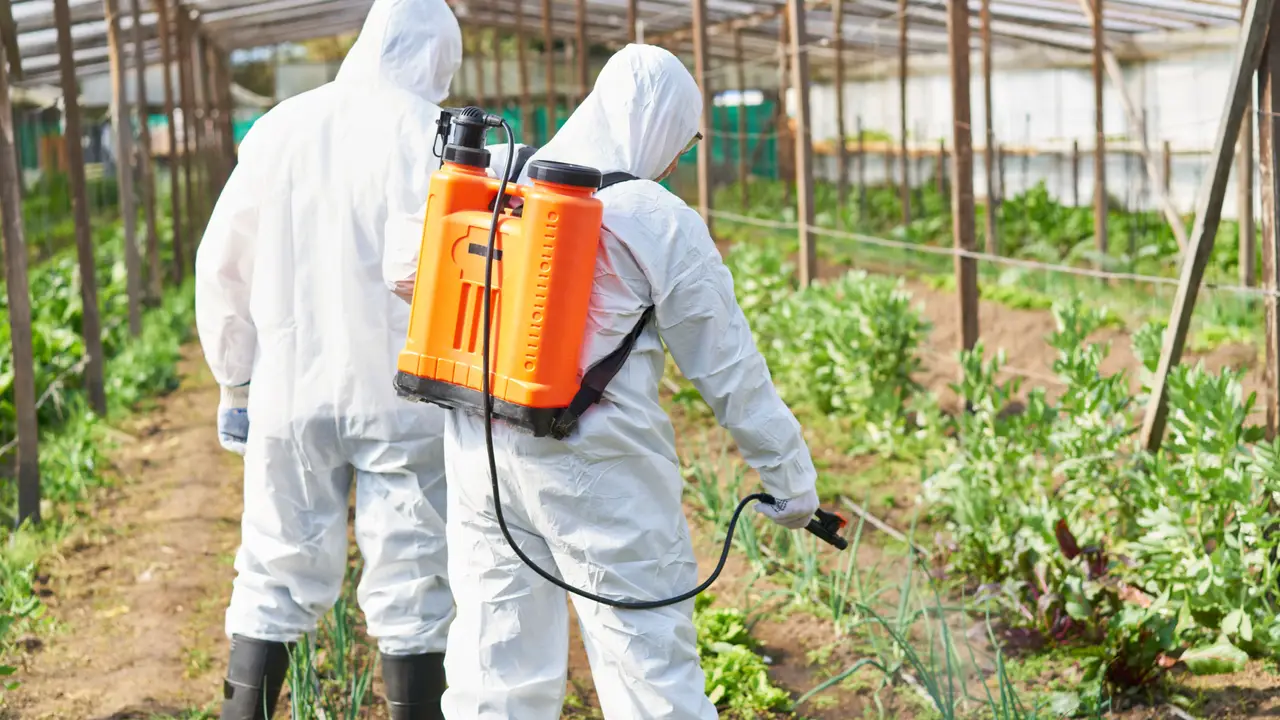Chemical Safety on Australian Farms


As the saying goes, the dose makes the poison. Everything is a chemical, but the dose of that chemical is what can make it dangerous.
Farm work often requires handling large amounts of chemicals like cleaning supplies, herbicides, pesticides, fertilizers, process-specific chemicals, and water.
Specific chemical use will vary depending widely. Each type of farm, different crops or livestock, and individual farming practices all require different chemicals.
Ensuring all workers are using chemicals safely will help mitigate potentially harmful exposures.
All farms use chemicals of some form, even organic produce farms. Synthetic chemicals are no more dangerous, and no safer, than ‘natural’ chemicals.
This means that all farm workers have at least some exposures to chemical hazards.
Some common chemical types that are used include:
Exposure to some of these substances can lead to a variety of short-term and chronic conditions. Depending on the chemical concentration and dose, harmful exposure could occur with a very small amount, or over a prolonged period.
Symptoms of harmful chemical exposure can include:
The best way to keep the farm chemically safe is to ensure that all state and national regulations are followed.
All hazardous chemicals should be labelled, stored, and used according to their safety data sheets. This includes appropriate signage around where chemicals are stored and used. Safety data sheets must be accessible to all workers, and a central list of dangerous substances should be created. Safe Work Australia has a bank of information which should be consulted.
Workers should be trained in safe handling of all chemicals they will be using. Safe handling includes proper use, storage, and response to exposure of chemicals. This means, at a minimum, basic first aid training. Depending on the chemicals used on the farm, further training specific to these chemicals may be needed.
Certain airborne chemicals, such as sprays, should be appropriately monitored to ensure that safe levels are maintained. Workplace exposure standards must be always adhered to.
Provide appropriate personal protective equipment such as gloves, shoe covers, and masks. Using the correct PPE can mitigate mild accidental exposure to many chemicals.
All workers should receive appropriate training in safe handling of all chemicals used on the farm. Training should include reviewing safety data sheets, which have emergency first aid instructions for each chemical.
In cases of severe exposure, Triple Zero should be called immediately. Get medical help right away, even if the exposure happens in a remote location. Seek medical advice and attention as soon as possible.
As a general guide, if the skin or eye is exposed to hazardous chemicals, the area should be flushed with lots of water. Starting treatment quickly after suspected exposure reduces damage, so it's important to act promptly.
If the person needs to be transported for treatment, continue flushing the site while transporting.
If clothing is compromised, it needs to be removed immediately to reduce the risk of further exposure.
In the event that a hazardous chemical is ingested, do not induce vomiting. Contact the Poison Information Centre on 131 126 immediately.
If a hazardous chemical or toxic fumes are inhaled, move the person to fresh air immediately. Ventilate the area by opening windows and turning on fans if possible. Seek medical attention straight away by calling Triple Zero and/or the Poison Information Centre. Make the person comfortable by loosening any tight clothing to assist with breathing.
If your First Aid training is not up to date, contact us today to arrange for a refresher.

October 1, 2024
Almost every job involves using the body to carry out some type of manual task. Some tasks may be hazardous, causing injuries such as musculoskeletal disorders (MSDs). Knowing how to manage them is a legal responsibility of all workplaces.

January 10, 2024
In Australia, workplace safety is a top priority, and First Aid plays a crucial role in ensuring the well-being of employees. Workplaces are expected to adhere to specific regulations and guidelines outlined by Safe Work Australia. How does your workplace stack up?

November 24, 2023
No matter how experienced you are as an outdoor activity leader, there are some things you should always do to keep your group safe. Nature can be unpredictable, and so it’s best to be prepared.